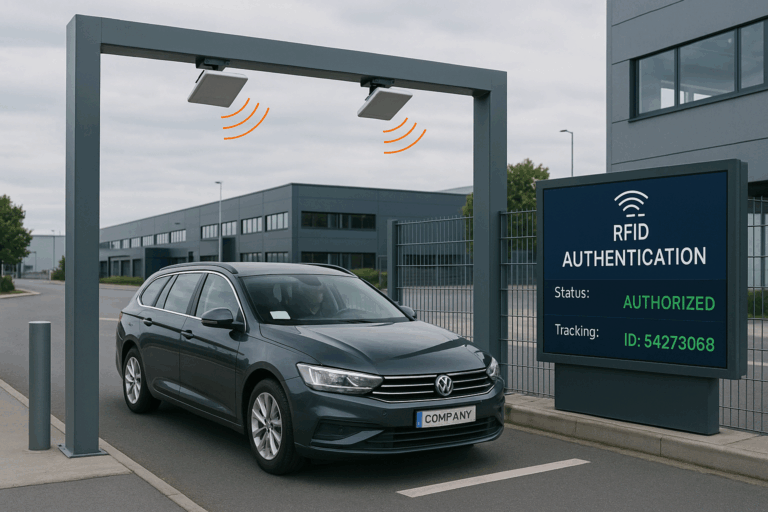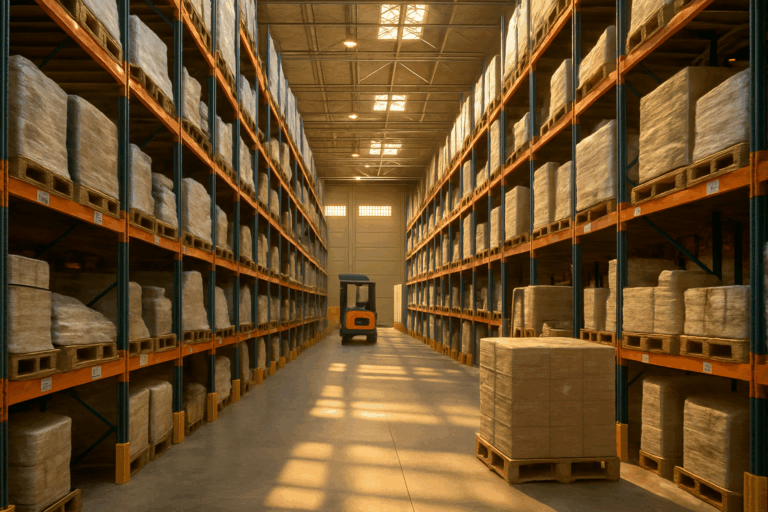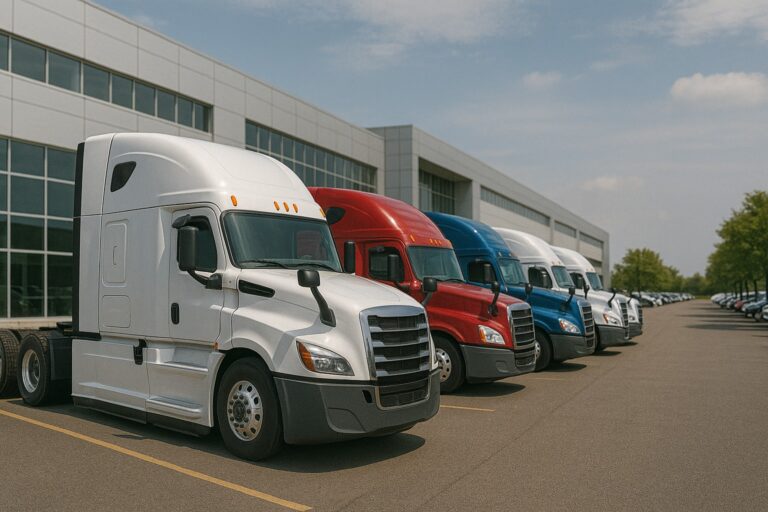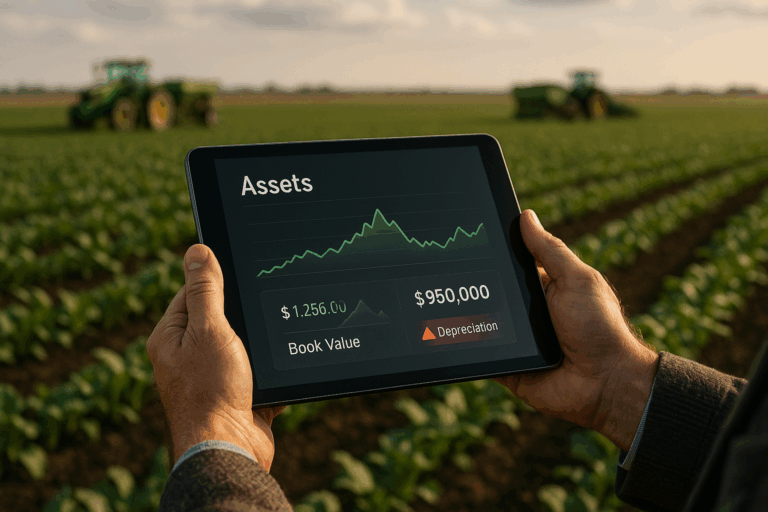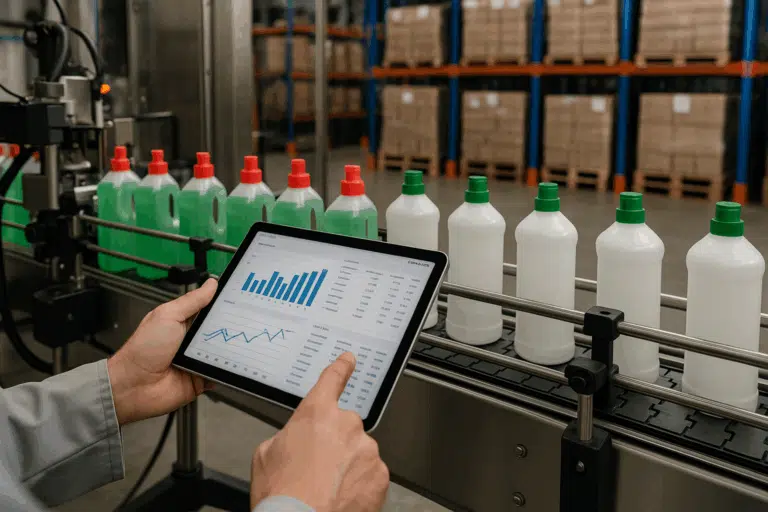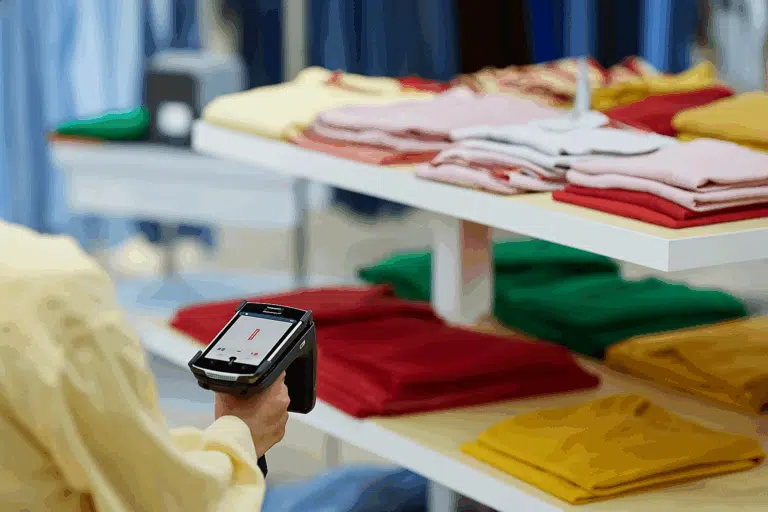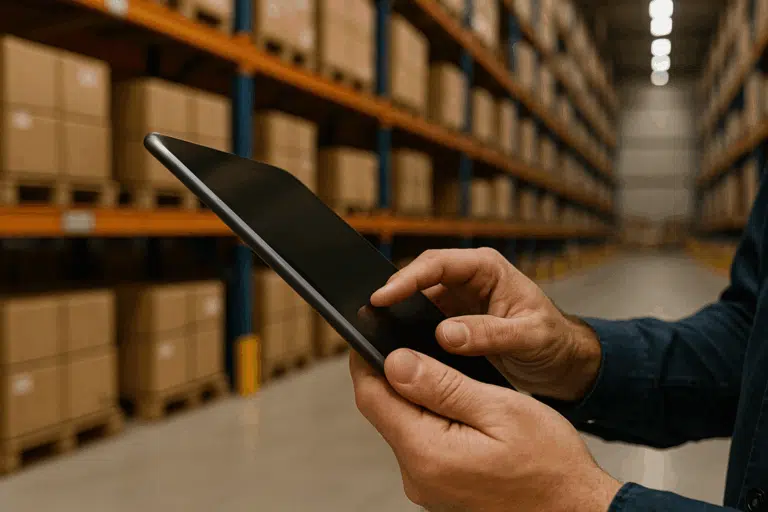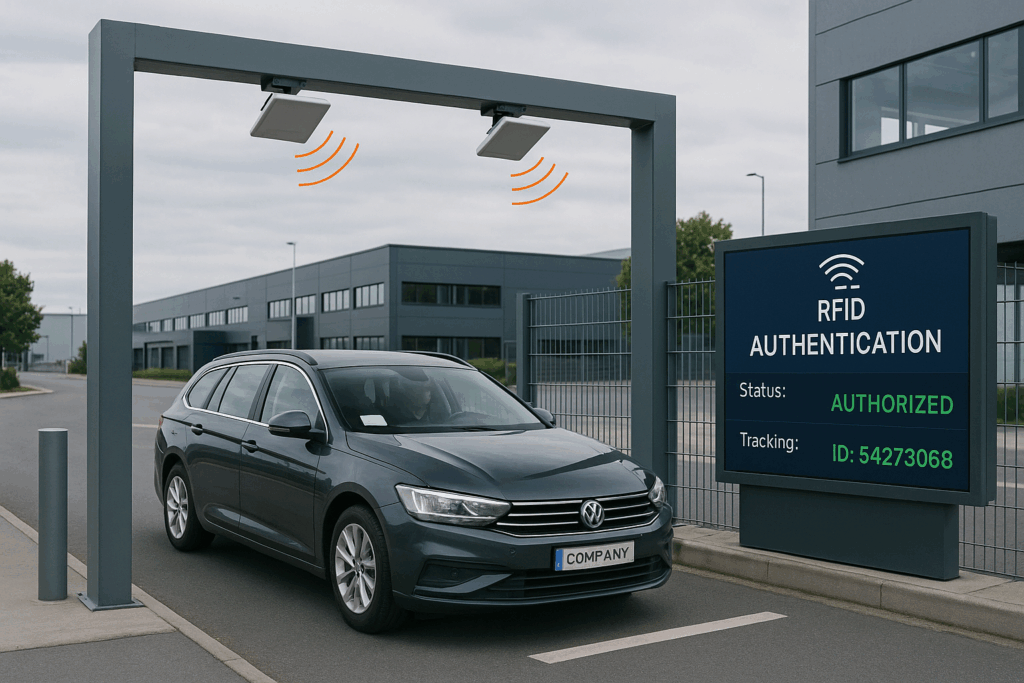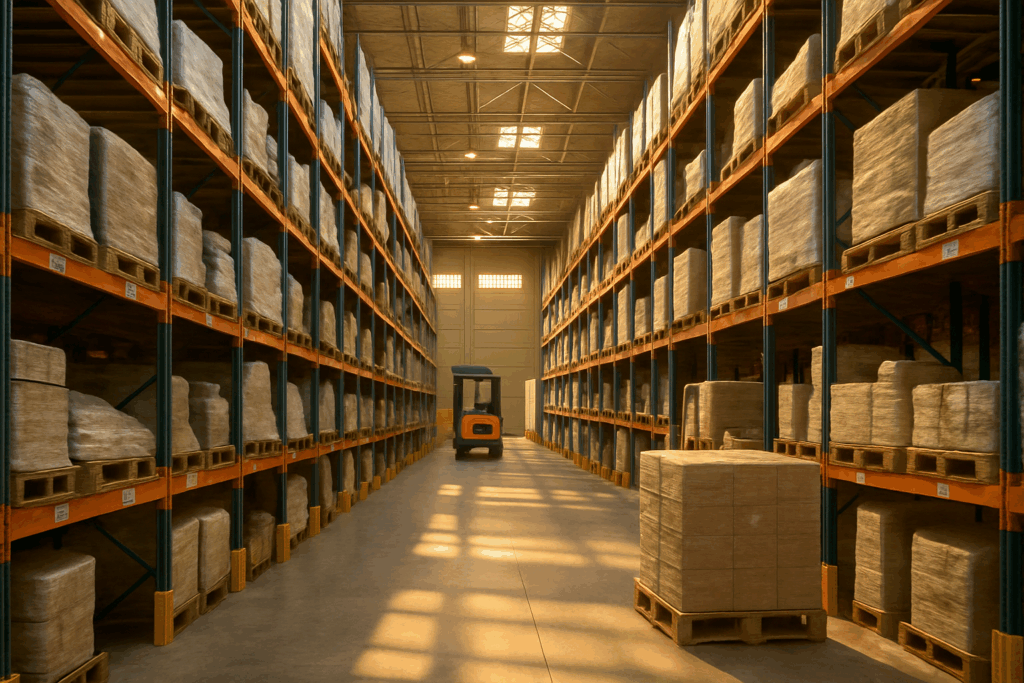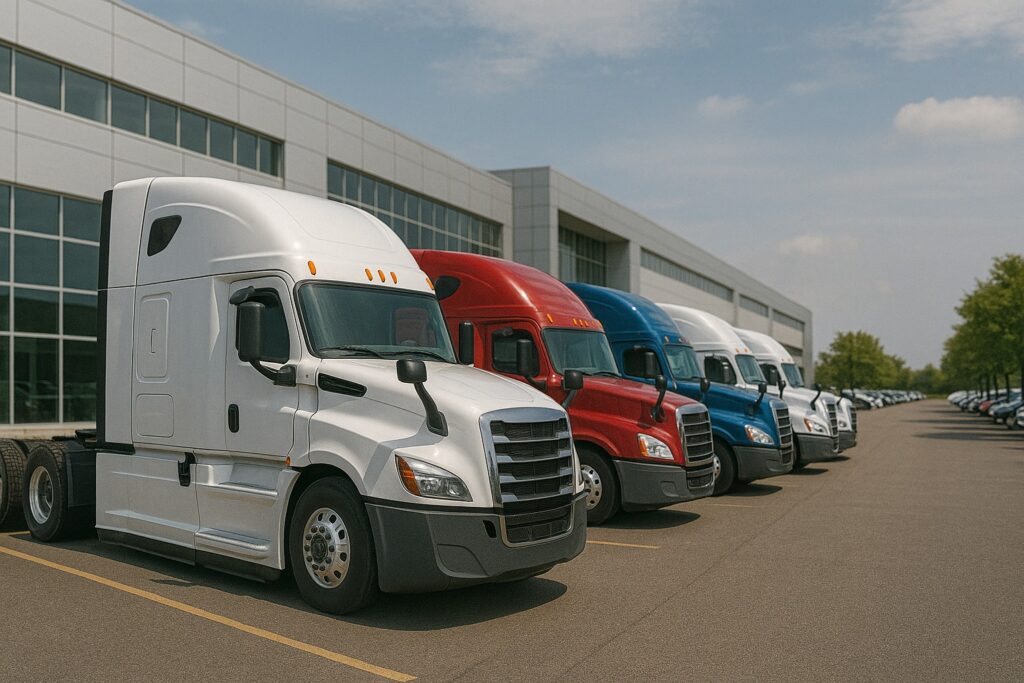About 90% of retailers now use RFID technology to change how they manage their stock. At The CPCON Group, we aim to make the rfid chip cost clear for businesses looking to innovate. The cost of RFID chips varies a lot, from a few cents for basic ones to over fifty dollars for advanced ones.
Looking at the RFID tag cost per unit, buying more can make it cheaper. Passive RFID chips are the most common because they’re affordable and versatile. When bought in large amounts, they can be very cheap. Active RFID chips cost more but offer special features that passive ones don’t.
Choosing the right RFID technology is complex. It involves picking from simple paper tags to complex metallic ones. Getting discounts for buying more helps save money. But, you also need to think about the cost of readers, antennas, and software. We want to help businesses find the best way to use RFID chips.
Table of Contents
ToggleKey Takeaways
-
- Understanding and planning for the varying cost of RFID chips is crucial for effective budgeting.
- The price of passive RFID tags can significantly decrease with bulk purchasing, highlighting the importance of scale in cost savings.
- Active RFID tags, with added functionality, demand a higher price point, suitable for specific strategic uses.
- Implementing an RFID system is a comprehensive investment, which must factor in software, hardware, and ongoing maintenance.
- Specialized, rugged, or customized RFID tags incur higher costs, aligning with their enhanced features or environmental resistance.
- Businesses must calculate the total cost of ownership (TCO) for RFID systems to assess long-term value and return on investment.
Total cost assessment should include the initial setup, integration, as well as future operation and maintenance expenses.
Understanding RFID Chip Technology and Its Uses
RFID technology is now key in business. At The CPCON Group, we’ve seen a big change. Companies use RFID to make things run smoother and get data right.
The Evolution of RFID Chips in Retail and Inventory Management
RFID has changed how we manage stores and stock. It lets us see and control inventory like never before. Now, products are tracked from the warehouse to the checkout, cutting costs and improving accuracy. This helps us understand sales and how customers shop.
Active vs. Passive RFID Chips: An Overview
At The CPCON Group, we know the difference between active and passive RFID chips. Active chips need power and work well over long distances. They’re great for big places like warehouses. They cost more but are worth it.
Passive chips don’t need power and are cheaper. They’re perfect for tracking items in stores. They help us keep an eye on inventory without spending a lot.
Frequency Bands and Their Impact on RFID Chip Performance
RFID uses different frequencies like LF, HF, and UHF. Each has its own strengths and weaknesses. The choice of frequency affects how well RFID works, impacting costs and efficiency.
Our experience with RFID at The CPCON Group helps us find the best solutions. We use active and passive RFID chips to help businesses. This way, we make RFID work better and cheaper for everyone.
The Cost Factors Influencing RFID Chip Prices
Understanding what affects RFID chip prices is key for businesses looking into RFID technology. The cost to implement RFID can change due to the chip type, order size, and customization needed.
Variations in RFID Chip Costs Depending on Types and Features
RFID chip prices change a lot based on the chip type and its features. Passive RFID tags are usually cheaper, costing between $0.09 and $20 each. This depends on their memory and how long they last.
Active RFID tags, though, can cost up to $100 each. They have a longer range and are more reliable. Adding features like being able to rewrite the tag or having more memory also raises the price. So, it’s important to compare RFID chip prices carefully when planning your budget.
How Volume Affects RFID Chip Cost Per Unit
Buying more RFID chips can make them cheaper per unit. Large orders often lead to lower prices per tag. This is great for big projects or tracking many assets.
Customization and Special Requirements Impacting Costs
Customizing RFID chips can increase their cost. Needs like special shapes or being able to work in tough conditions can make them pricier. For companies needing custom solutions, like those from The CPCON Group, knowing these costs is key. The CPCON Group offers custom RFID solutions that make the investment worth it.
There are also ongoing costs like system updates and maintenance. These costs are important for keeping RFID systems running well. They cover software updates and fixing hardware to keep things running smoothly.
In summary, RFID chip and implementation costs are affected by type, volume, and customization. Businesses should compare prices and think about long-term costs when planning RFID projects. This way, they make sure they’re saving money now and later.
Breaking Down the Cost of Different Types of RFID Chips
Understanding the cost of RFID tags is key for different uses. There are three main types: passive, active, and semi-passive RFID tags. Each type has its own price and features. Let’s look at these costs to help users and buyers make good choices.
Passive RFID tags are the cheapest, costing just a few cents each in bulk. They’re great for tracking lots of items. Active RFID tags are pricier, costing $15 to $50 each. They have a battery that lets them send signals on their own, making them better for tracking over long distances.
Semi-passive RFID tags are in the middle, costing more than passive but less than active tags. They use a battery to power their chip but don’t send signals on their own. This gives them a longer range than passive tags but costs less than active ones.
| RFID Tag Type | Cost Range per Tag | Typical Use Case | Read Range |
|---|---|---|---|
| Passiving RFID Tag | $0.08 – $20.00 | Inventory Management, Asset Tracking | Near contact – 25 meters |
| Active RFID Tag | $15.00 – $50.00 | High-value Asset Tracking, Vehicle Tracking | 30 – 100+ meters |
| Semi-Passive RFID Tag | $0.50 – $25.00 | Supply Chain Management, Cold Chain Monitoring | Extended range over passive tags |
This breakdown should help you understand RFID tag prices and make smart choices. The right RFID technology can make things run smoother, track assets better, and save money in the long run.
Passive RFID Chips: Affordable Solutions for Retailers
Passive RFID chips are low cost RFID solutions in today’s retail tech world. They are key in managing inventory, offering a cheaper option than active tags. With affordable RFID tag pricing, many retailers are choosing these tags for their cost and usefulness.
In retail, buying RFID chip cost bulk lowers the price a lot. Companies like Avery Dennison offer them for as low as 13 cents each for big orders. This makes passive RFID chips a hit with retailers watching their budgets.
Price Range for Passive RFID Chips and Their Applications
Passive RFID chips are used for many things, from simple inventory tracking to complex supply chain management. The TR800 passive UHF RFID tag is a top pick for retail because it works well in close-range reading.
Why Passive RFID Chips Are a Popular Choice for Cost-Conscious Businesses
These chips are great because they offer good performance at a low cost. They’re perfect for businesses managing lots of inventory without spending a lot at first. The savings from needing fewer people and being more accurate in tracking add to their appeal.
| Tag Type | Cost per Tag | Applications |
|---|---|---|
| TR800 UHF RFID | $0.036 | Retail, Apparel Labeling |
| Generic Passive RFID | $0.13 | Wide-scale Inventory |
Using RFID, especially passive tags, makes operations more efficient and fits many businesses’ budgets. It shows how affordable RFID tag pricing helps in its wide use. While barcodes are cheaper at first, RFID offers a better system for managing inventory, making it a smart long-term choice.
The Higher Cost of Active RFID Chips and Their Advanced Capabilities
RFID systems have complex economic aspects, especially with advanced RFID chips. These chips are more expensive but offer great benefits in many industries.
Looking into RFID investment analysis, we see their advanced features. Active RFID tags have a long read range and last a long time. They’re perfect for tracking things in big areas, like in logistics and healthcare.
Justifying the Expense: Use Cases for High-End Active RFID Chips
High-end RFID formulation in active chips is key for precise tracking. They help in many areas, like managing medical gear and tracking items in big supply chains. Their better performance means they pay for themselves by making things more efficient and secure.
Longevity and Distance: The Upside of Investing in Active RFID Technology
Active RFID chips last longer and work over bigger distances. This makes them great for things like real-time location systems and tracking valuable items. They give a clear view of where things are, helping with better decisions and making things run smoother. Plus, they don’t need to be replaced as often, saving money in the long run.
So, even though advanced RFID chips cost more upfront, they offer big benefits. They make operations more efficient and secure, making them a smart choice for businesses.
Semi-Passive RFID Chips: Bridging the Gap Between Cost and Value
Businesses look at RFID technology and its effects on their work. Semi-passive RFID tag prices are key in making choices. These tags are a good mix of price and advanced features. They cost between $5 to $20 each. This makes them a good choice for businesses that don’t need the high costs of active systems.
They fit well where a moderate read range is enough and some battery help is good. This balance of cost and function is perfect for many situations.
| Tag Type | Cost | Read Range | Battery Life |
|---|---|---|---|
| Active RFID Tag | $20 – $50+ | Up to 600 feet | 3-5 years |
| Semi-Passive RFID Tag | $5 – $20 | Up to 100 feet | Varies |
| Passive RFID Tag | $0.10 – $10+ | Up to 30+ meters | None |
Semi-passive tags are great when passive tags don’t reach far enough and active tags are too expensive. Doing an RFID cost-benefit analysis shows they can improve inventory accuracy and cut costs. They are a good choice for midsized operations looking to boost logistics.
Big retailers and logistics companies see semi-passive RFID as a smart tech investment. These tags offer better sensor sensitivity and longer read ranges than passive tags. They are also much cheaper than active tags.

In retail, where managing inventory is key, semi-passive RFID is gaining popularity. Studies show RFID can make inventory up to 98 percent accurate. This makes semi-passive RFID a good choice for businesses wanting precise stock control and asset tracking.
Choosing semi-passive RFID is a wise move for businesses looking for both performance and affordability. For those needing both, semi-passive RFID tags are a great tool to reach their goals efficiently.
Comparing RFID Chip Costs: From Low-Frequency to Microwave
In exploring RFID technology, it’s key to know the costs of each RFID frequency band. This part looks at the RFID frequency band costs. It shows how these costs relate to where and how they work.
Decoding Price Differences Across RFID Frequency Bands
Looking at RFID chip frequency comparison shows many uses. From low-frequency (LF) tags for tracking animals and controlling access, to microwave tags for toll systems. Each type has its own cost, based on its range and how fast it can send data.
| Frequency | Typical Range | Common Applications | Approximate Cost |
|---|---|---|---|
| Low-Frequency (LF) 125 kHz | Up to 10 cm | Animal ID, access control | $0.15 – $0.75 per tag |
| High-Frequency (HF) 13.56 MHz | Up to 10 cm | Library books, ticketing | $0.20 – $1.00 per tag |
| Ultra-High Frequency (UHF) 800-900 MHz | Up to 10 meters | Supply chain, inventory | $0.10 – $1.50 per tag depending on volume |
| Microwave Frequency 2.45 GHz | Up to 10 meters | Toll collection, high-speed applications | $0.50 – $5.00 per tag |
Which Frequency Is Right for Your RFID Implementation?
Choosing the right RFID frequency is key for your business needs and budget. Buying lots of UHF tags can make them cheaper, which is good for managing lots of items. Looking at the different frequencies, their costs, and what they do can help you decide.
When picking, think about the whole system, like RFID readers and antennas. These things add to the final implementation costs. So, considering these factors with RFID tagging prices is important for a good RFID setup.
The Impact of Material and Design on RFID Chip Cost
Looking into RFID tag material cost and design complexity shows us how important design choices are. At The CPCON Group, we know how to balance cost and performance. This is key in places needing tough RFID tags.
RFID tags come in many materials, depending on where they’ll be used. For example, passive RFID tags cost between 5 to 15 cents. They usually use paper or simple plastic in safe places. But, in tough spots, they need stronger materials like PVC or polyester to protect them from damage.
Understanding How Environmental Factors Influence RFID Tag Material Choices
When picking RFID tag materials, we think a lot about the environment. For tags used outside or in tough places, we pick materials that can handle the rough conditions. Our tags keep working well, even in the sun, heat, or with harmful chemicals around.

When Design Complexity Can Drive Up RFID Chip Prices
How complex a RFID tag is also affects its cost. Special tags need fancy antennas and top-notch materials to work right in different places and situations. The design depends on what the RFID is for, like tracking items in stores or materials on a construction site. Making these tags is complex and uses a lot of resources, with most copper used getting thrown away.
In the end, knowing about materials and design helps us manage RFID tag costs. It’s key to pick the right parts to save money and still get the job done. This is very important for using RFID tags in tough places.
Volume Discounts and Bulk Pricing for RFID Chips
Buying RFID chips in bulk can save a lot of money. It’s key to know how to buy them to save big. RFID inventory management systems work better with good bulk discounts.
Strategies for Reducing Overall RFID Costs Through Bulk Purchases
Using smart pricing for RFID chips helps cut costs for big projects. Companies like MoreRFID and atlasRFIDstore offer discounts for buying more. They lower prices for big orders, giving big savings.
This is great for businesses wanting to save money and grow their RFID use.
Negotiating with Suppliers to Get the Best RFID Chip Cost Bulk Deals
We value strong supplier relationships at our company. Getting the best deals needs knowing how to talk about prices and benefits. Working with atlasRFIRstore has helped many clients save on supply chain costs.
MoreRFID’s focus on custom solutions and quality also adds value. Good negotiation means finding the best value, not just the cheapest price.
Knowing how to work with suppliers helps us help our clients. Buying RFID chips in bulk is key for making RFID projects work well. It helps with tracking assets, managing inventory, or controlling access.
RFID Chip Cost Analysis: Features That Affect Pricing
When looking at RFID technology, knowing what affects the cost is key. The special features of RFID tags change their price. This affects how affordable RFID systems are.
Secure RFID solutions use advanced encryption to keep data safe. This is very important when keeping data private and secure. So, these secure RFID tags cost more.
The Role of Memory, Security, and Sensors in RFID Chip Pricing
RFID tags with more memory can hold more data. This is great for tracking complex information about products. But, they cost more to make.
Security features like encryption also add to the price. They make RFID tags more secure and safe.
Advanced RFID Capabilities: When Are They Worth the Additional Cost?
Sensors in RFID tags make them more expensive. But, they can track things like temperature or humidity. This is very important for industries with perishable items.
These RFID chip enhancements are durable. They can save money in the long run, making them a smart choice.
| Feature | Cost Influence | Utility |
|---|---|---|
| Memory Capacity | High | Essential for complex tracking needs |
| Security Encryption | Medium to High | Critical for sensitive data protection |
In conclusion, enhanced RFID tags may cost more at first. But, they can save money and increase efficiency over time. Knowing what affects RFID costs helps businesses choose the right technology for their needs.
Total Cost of Implementing RFID Technology
Looking at RFID systems for warehouses or supply chains means understanding many costs. At The CPCON Group, we focus on the whole picture. It’s not just about RFID tag prices. Costs include readers, antennas, and infrastructure for smooth integration into your operations.
It’s smart to look at partnerships with companies like KORONA POS and RFID Enabled solutions. They help with efficient inventory management.
Examining the Added Costs of RFID Readers, Antennas, and Infrastructure
Creating a cost-effective RFID setup means looking at the hardware costs. Passive RFID tags start at 10¢ each, but some for metal surfaces or hardware cost up to $1.50 each. Active RFID tags, with better tracking, are pricier, from $15 to $20 each.
Readers, whether handheld or fixed, are a big investment. Handhelds cost between $3,000 and fixed portals up to $20,000. These are needed for detecting and reading tags.
Calculating Return on Investment: RFID System Cost vs. Benefits
Looking at RFID’s ROI, we see upfront costs are just part of it. The benefits like better operations, improved customer service, and a strong brand image are priceless. Investing more can lead to automation and big savings over time.
For example, using RFID in weekly inventory checks can cut labor costs a lot. A study shows a big retailer could save $3,737,000 by switching from barcode to RFID.
Learn more about RFID’s impact on businesses at A2B Tracking solutions website. It shows how RFID can boost sales by improving inventory accuracy from 65% to 99%.
FAQ
How much does an RFID chip cost?
RFID chips can cost from a few cents for passive ones in bulk to to or more for active ones with more features.
What has led to the evolution of RFID chips in retail and inventory management?
Retailers wanted better inventory management and real-time tracking. This led to RFID technology’s growth and more affordable options.
How do active and passive RFID chips differ?
Active RFID chips have their own power and send signals far. Passive ones get power from the reader and are used for closer tracking.
What impact do frequency bands have on RFID chip performance?
Frequency bands change how far RFID chips can read and send data. Low-frequency is for close use, while ultra-high-frequency is for tracking over long distances.
How do variations in types and features affect RFID chip costs?
Different RFID chips and features like memory or security raise the price. More complex chips cost more.
How does volume affect RFID chip cost per unit?
Buying RFID chips in large amounts lowers the cost per chip. This is good for big projects.
Do customization and special requirements impact RFID chip costs?
Yes, special requests like unique shapes or environmental resistance make RFID tags more expensive.
What is the price range for passive RFID chips and their applications?
Passive RFID chips can be as cheap as
FAQ
How much does an RFID chip cost?
RFID chips can cost from a few cents for passive ones in bulk to $20 to $50 or more for active ones with more features.
What has led to the evolution of RFID chips in retail and inventory management?
Retailers wanted better inventory management and real-time tracking. This led to RFID technology’s growth and more affordable options.
How do active and passive RFID chips differ?
Active RFID chips have their own power and send signals far. Passive ones get power from the reader and are used for closer tracking.
What impact do frequency bands have on RFID chip performance?
Frequency bands change how far RFID chips can read and send data. Low-frequency is for close use, while ultra-high-frequency is for tracking over long distances.
How do variations in types and features affect RFID chip costs?
Different RFID chips and features like memory or security raise the price. More complex chips cost more.
How does volume affect RFID chip cost per unit?
Buying RFID chips in large amounts lowers the cost per chip. This is good for big projects.
Do customization and special requirements impact RFID chip costs?
Yes, special requests like unique shapes or environmental resistance make RFID tags more expensive.
What is the price range for passive RFID chips and their applications?
Passive RFID chips can be as cheap as $0.10 or up to several dollars each. They’re used a lot for tracking items in stores.
Why are passive RFID chips popular among cost-conscious businesses?
They’re affordable and work well for many tasks. This makes them great for businesses wanting to track inventory without spending a lot.
What are the benefits of investing in active RFID technology?
Active RFID tech tracks items over long distances and updates in real-time. It’s great for keeping track of valuable items in fields like logistics and healthcare.
How do semi-passive RFID chips bridge the gap between cost and value?
Semi-passive RFID chips offer more features and longer range than passive tags but are cheaper than active ones. They’re a good choice for some uses.
How do RFID frequency bands differ in cost?
RFID frequency bands affect price. Low-frequency is cheaper for short-range use, while high-frequency is pricier for tracking valuable items over long distances.
What are the effects of material and design on RFID chip cost?
The materials and design of RFID chips, like rugged casings, can make them more expensive. They’re needed for tough conditions.
What are strategies for reducing overall RFID costs through bulk purchases?
Buying RFID tags in large amounts can lower the cost per tag. This is done by negotiating with suppliers for bulk deals.
How do advanced features like memory and sensors affect RFID chip pricing?
RFID tags with more memory or sensors cost more. They have more features and are more complex.
What are the added costs of implementing an RFID system?
Setting up an RFID system costs more than just the chips. It includes readers, antennas, software, and integrating with current systems, which all add to the total cost.
How can businesses calculate the return on investment for RFID systems?
To figure out ROI, businesses should look at the total RFID setup cost versus its benefits. This includes better efficiency, less labor, and more accurate tracking.
.10 or up to several dollars each. They’re used a lot for tracking items in stores.
Why are passive RFID chips popular among cost-conscious businesses?
They’re affordable and work well for many tasks. This makes them great for businesses wanting to track inventory without spending a lot.
What are the benefits of investing in active RFID technology?
Active RFID tech tracks items over long distances and updates in real-time. It’s great for keeping track of valuable items in fields like logistics and healthcare.
How do semi-passive RFID chips bridge the gap between cost and value?
Semi-passive RFID chips offer more features and longer range than passive tags but are cheaper than active ones. They’re a good choice for some uses.
How do RFID frequency bands differ in cost?
RFID frequency bands affect price. Low-frequency is cheaper for short-range use, while high-frequency is pricier for tracking valuable items over long distances.
What are the effects of material and design on RFID chip cost?
The materials and design of RFID chips, like rugged casings, can make them more expensive. They’re needed for tough conditions.
What are strategies for reducing overall RFID costs through bulk purchases?
Buying RFID tags in large amounts can lower the cost per tag. This is done by negotiating with suppliers for bulk deals.
How do advanced features like memory and sensors affect RFID chip pricing?
RFID tags with more memory or sensors cost more. They have more features and are more complex.
What are the added costs of implementing an RFID system?
Setting up an RFID system costs more than just the chips. It includes readers, antennas, software, and integrating with current systems, which all add to the total cost.
How can businesses calculate the return on investment for RFID systems?
To figure out ROI, businesses should look at the total RFID setup cost versus its benefits. This includes better efficiency, less labor, and more accurate tracking.



